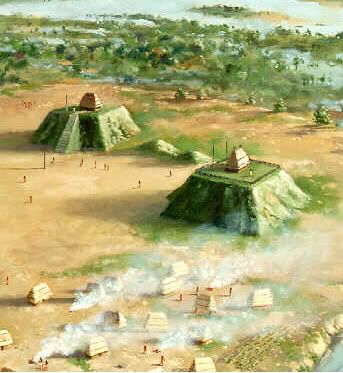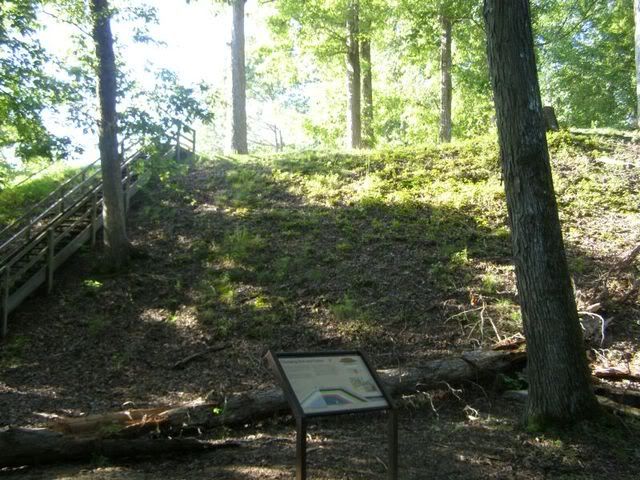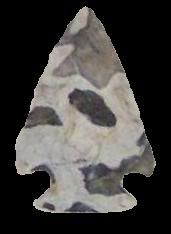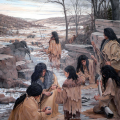Mississippian is a cultural complex whose hearth appears to be in the American Bottom area near the Mississippi River in Illinois. The most spectacular characteristic of Mississippian material culture was the construction of earthen pyramids. The pyramids, usually called mounds, have a flat top which provided a space for a ceremonial building or a chiefly residence. Setting the stage for the emergence of this complex culture were the use of the bow and arrow and the development of maize agriculture at about 650 CE. With the development of Mississippian culture, communities became larger and more complex. Mississippian culture spread out into the American southeast and about 1050 Mississippian people established a village at Shiloh, Tennessee. The site was enclosed by a palisade and had a population of 300-400.

Fifty years later, Shiloh had about 100 houses and eight mounds. The houses were basically round, with wattle and daub walls. The walls were supported by a series of heavy posts, usually 2 to 3 inches in diameter. These poles were placed at four foot intervals around the perimeter of the house and the spaces between the poles were then filled with panels of cane strips. The canes were then covered with a thick coating of mud plaster. Doorways generally faced to the east or southeast. The typical house was about 16 feet in diameter and stood about 8 feet in height.
Among the artifacts used at the site were drills. These were made from flakes or blades of chert and were used for drilling shell. These were found at only a few houses in the site, indicating that not all households where involved with working on shell ornaments.
Also used in making shell ornaments were saws to make the square blanks for making disc beads from mussel shells. The saws were similar to those used at Cahokia.
Shiloh appears to have been a White town, that is, a town associated with peace. Mound C, for example, was initially capped with a deposit of white clay and what appears to be an important pipe was placed in its central tomb. Unlike the burials at other Mississippian sites, Shiloh’s most important burials do not have any warfare-related symbolism. The Shiloh burials seem to be associated with the color white and with a pipe, the quintessential eastern U.S. Indian symbol of peace.
In 1400, the town of Shiloh was abandoned. There is no archaeological evidence that the residents were driven away from the site by violence: their departure seems to have been peaceful. One possible reason for the abandonment of the site could have been that some other location offered greater advantages. After more than three centuries of farming, it was possible that declining soil nitrogen, essential for maize agriculture, had resulted in decreasing agricultural yields.
Another reason for the abandonment might be seen in the collapse of the Mississippian city of Cahokia in Illinois. Since Shiloh appears to have had strong ties to Cahokia, the collapse or decentralization of the Mississippian peoples may have lead to population migrations.
The Shiloh Mounds are within the boundaries of the Shiloh National Military Park. From an archaeological perspective this means that the site has not been disturbed by modern farming. The remains of the original structures of wattle and daub are still visible as low rings or mounds. The site was added to the National Register of Historic Places in 1979 and it was declared a National Historic Landmark in 1986.

The Shiloh Temple Mound is shown above.

Shiloh house mounds are shown above.




Leave a Reply